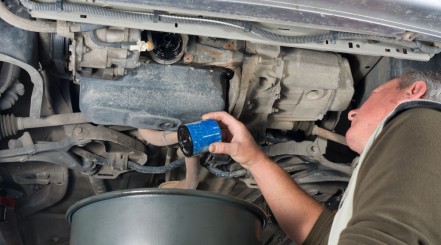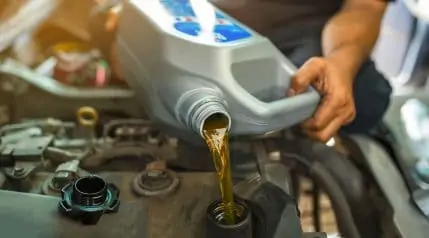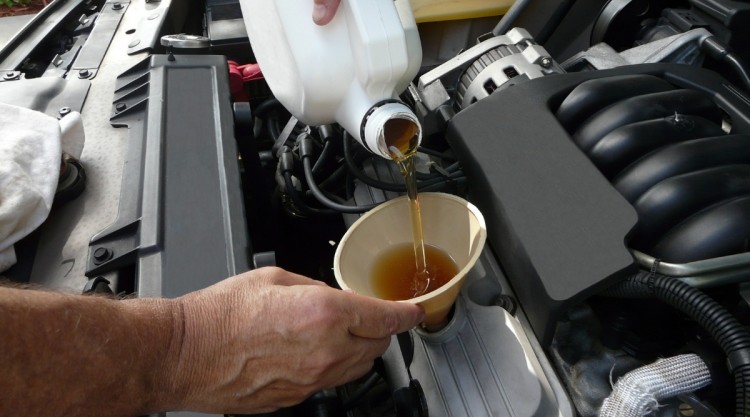
Motor oil, like so many products we use today, has come so far from what it used to be in terms of technological advancement.
Nowadays, there is a dizzying array of products, types, styles, weights, and formulations of motor oil to choose from – so many, in fact, that it can be difficult to know what each one is intended for and what it’s supposed to do.
Some of the confusion lies in how oil is classified by its viscosity, i.e the number designation assigned to each type that can be seen on the bottle. Even the type recommended by your vehicle’s owner’s manual may leave you wondering what all the information is for.
In this article, we aim to help eliminate some of that confusion and explain what all of those numbers mean. We’ll also delve into the specifics of 10W30 vs 10W-40 oil so you can be sure you’re buying the right type for your vehicle.
Key Takeaways
- The Variables – What motor oil grade you need depends on the specifics of your vehicle, the climate you live in, and other factors discussed below.
- Choose 10W-30… – …if you want better fuel economy, live in a cold climate, or have a non-performance engine with a lower running temperature.
- Choose 10W-40… – …if you live in a hot climate, have a loose-clearance engine, an older vehicle, or one that operates at higher temperatures.
Contents (Jump to Topic)
What Do All These Numbers Mean?
Each motor oil is assigned a grade. This grade is based on how the product acts during cold temperatures versus warm temperatures.
Cold temperatures change the way engine oil flows. More specifically, cold temperatures tend to harden it and cause it to solidify, becoming gummy as it gets colder. On the other hand, it thins out and becomes runnier as the temperature warms.
The numbers printed on each batch of oil are directly related to this. They’re there to measure oil viscosity.
Years ago, back when oil wasn’t anywhere near as complicated and advanced as it is today, most vehicle engines ran on single-grade options.
Today, it’s a whole other ballgame. Nowadays, we have the luxury of having multi-grade engine oils at our disposal, which serves multiple purposes for the engines of our vehicles.
What’s the Difference Between Single-Grade and Multi-Grade Oils?
Single-grade doesn’t do anything different than multi-grade in terms of lubricating an engine. The difference lies in how it handles colder and hotter temperatures.
Single-grade simply acts as previously mentioned, thinning as engine operating temperatures climb and thickening in a cold engine.
On the other hand, multi-grade actually resists thinning and thickening, depending on the oil’s viscosity grades. Its properties and makeup allow it to “change” and act almost like two different motor oils with different levels of viscosity at both high and low temperatures.
The Society of Automotive Engineers has devised a scale consisting of up to three number and letter designations for each engine oil’s grade.
Single-grade products will only have a single number designation such as SAE 20 or SAE 30. A multi-grade product such as SAE 10W30 or SAE 10W40 can be broken down into three separate sections.
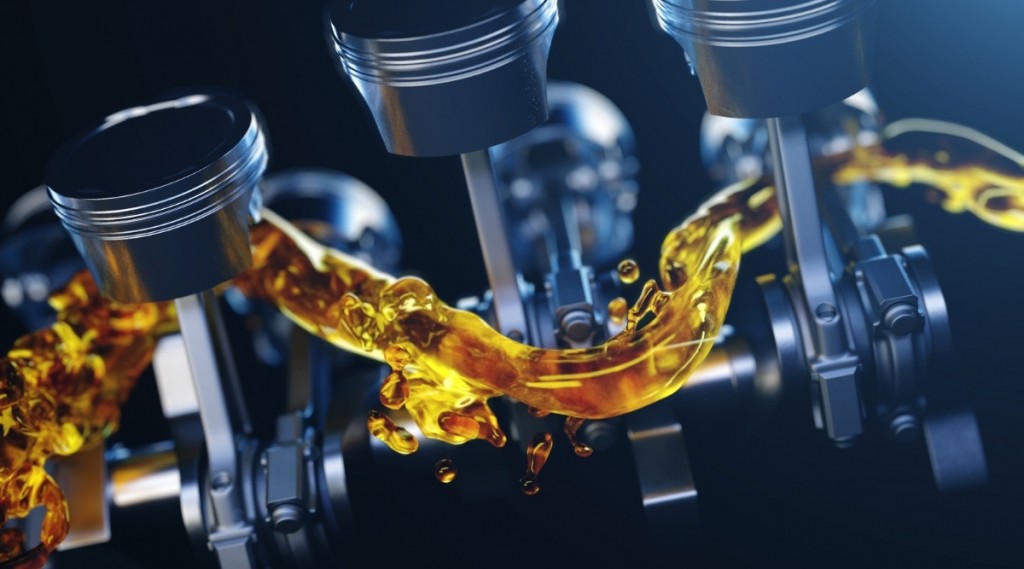
What Does The First Number “10” Mean?
10 is the cold weather viscosity rating for 10W30.
This number represents an oil’s ability to maintain its resistance to hardening and thickening at 0 degrees Celsius.
The lower the number, the thinner the oil. Therefore, a product with a 0 or 5 cold-weather rating will be thinner and will flow more easily than a 10 or 20-rated one.
What Does The Letter “W” Mean?
The letter “W” following the 10 stands for “winter”, and it’s simply there to let you know that the first number is the cold temperature viscosity rating.
What Does The Last Number “30” or “40” Mean?
The last number in SAE’s grade designation is the warm or operating temperature rating. In contrast to the cold weather rating, the warm temperature rating shows how resistant a motor oil is to thinning at 100 degrees Celsius.
Since we already know that a lower number means a thinner oil, it’s easy to see that 10W-30 will be thinner at high operating temperatures than 10W-40, which will resist thinning a bit more at high operating temperatures.
In single-grade, this last number is the only grade designation an oil receives. It is important to note that oils like SAE 30 and 40 may have been used in the past, but almost all modern engines today use multi-grade.
What Is Viscosity?
Viscosity is the measure of an oil’s resistance to flow. In other words, it’s the natural thickening and thinning of any fluid as it responds to the external temperature that we’ve been talking about so far throughout this article.
The rise of synthetic oils in the place of their conventional counterpart has allowed us the option to pick and choose almost any combination of cold viscosity grade and warm viscosity grade that we prefer.
10W-30 and 10W-40 oils are both among the most common grades used in many regular vehicles today. Of the two, 10w40 is the more viscous oil.
Which one is used in your car could depend on many factors, though. Since both 10W-30 and 10W-40 have the same cold weather grade, the main difference between the two is the high temperature viscosity.
Why Should I Use 10W-30?
10W-30 will have a lower viscosity at operating temperatures than 10W-40. A thinner engine oil at high temperatures has many benefits over one that retains its thickness under the same circumstances.
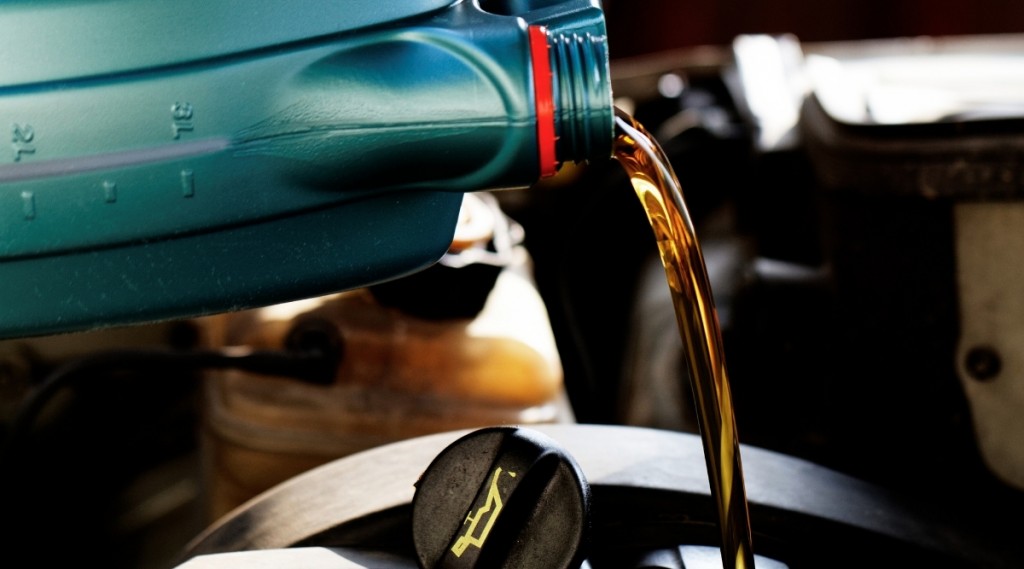
Improve Fuel Economy
Because 10W-30 is thinner than 10W-40 at operating temperature, it allows the internal components of your engine to work less and move more effortlessly. This causes less fuel to be used as thinner means there’s less friction to work against.
However, you probably shouldn’t use 10W-30 only for the sole purpose of decreasing your vehicle’s fuel consumption.
Better In Cold Weather
10W-30 isn’t any different at starting temperatures than 10W-40 – but at operating temperature, the environment isn’t going to have as profound an effect as if it were hot outside the vehicle.
In other words, if it’s 90 degrees outside, the temperature of your engine is already going to run at higher temperatures because of the ambient heat and subsequent absorption of the heat by your vehicle’s metal.
If it’s cold outside, those factors won’t have any effect on the operating temperature of the vehicle, and the motor oil in your engine must be able to resist the cold and flow easily to all the components under the hood.
Better For Non-Performance Engines With Lower Running Temperatures
Even though this is not always the case, most everyday family vehicles won’t operate at as high of a temperature as some performance vehicles which are turbocharged or finely tuned for specific types of racing.
This eliminates the need to have a thicker oil which is harder to push through the engine of most normal vehicles (and which may cause excessive oil temperature).
In fact, a thicker option used in a vehicle with a relatively low operating temperature may excessively wear some components by making them work harder to pump and move oil around the engine.
A More Common, All-Purpose Option
Back when single-grade was the only option available, many vehicles used a low viscosity oil during colder months and switched to a higher viscosity oil during the warmer months to compensate for temperature fluctuation.
Today, with multi-grade options available, the need to change oil based on seasonal changes has all but been eliminated.
10W-30 is a great middle-of-the-road option for both hot weather and cool weather as it retains enough of the appropriate viscosity levels at both low and high temperatures.
Though 5W-30 is more commonly used, 10W-30 isn’t far behind – and beats out 10W-40 in its overall usefulness.
Reduces Strain on Pump
Using oils with a higher viscosity increases the degree of strain on the oil pump. In some cases, it can prevent the oil from circulating through the engine, which can lead to serious damage to your engine parts.
Why Should I Use 10W-40?
10W-40 will have a higher viscosity at operating temperatures than 10W-30. Motor oil that is able to maintain its thickness at high operating temperatures has many benefits to show for.

Generally Better In Warm Weather
10W-40 oil remains thick at higher temperatures. Thicker oil is able to better lubricate an engine at higher temperatures, as it has a propensity to stick to components.
Even though thinner can often mean decrease running costs, it will also exacerbate excess heat formed by the friction of rubbing components, which could end up causing excessive wear and engine damage.
Usually Better For Older Vehicles
Age isn’t kind to most things, including engines.
Wear and tear will loosen, machine away, and even chip components within a vehicle. As these components become worn, a thicker option will ensure that larger gaps and worn components will stay lubricated.
More Suitable For Vehicles Which Operate at Higher Temperatures
Vehicles that are turbocharged, tuned, or otherwise have special components often run at higher operating temperatures than their regular counterparts.
Because of this, 10W-40 will be more resistant to thinning than 10W-30.
10W-40 used in a vehicle that operates at 200 degrees may have the same viscosity as 10W-30 used in a vehicle that operates at 150 degrees.
Better For Loose-Clearance Engines
For technicians and hobbyists that build and tune engines, bearing clearances are important.
That being said, vehicles with loose clearances will require a thicker oil at operating temperature than those with tight clearances.
This is similar to the concept of older vehicles having more wear and tear on the engine components than newer vehicles whose components are well-fitted and not yet broken in.
To learn more about comparing 10W-30 and 10W-40, here’s a useful video we thought we’d share with you.
What Other Information Should I Know Pertaining To 10W30 VS. 10W40?
First things first, always read your owner’s manual to understand what type of oil grade your vehicle’s engine requires. Some vehicles will allow “wiggle room” to include a range of oil grades, but deviating from this and deciding to do your own thing may result in damage to your engine.
If you’re the type of person who changes your vehicle’s oil yourself or if you just take your vehicle down to the local shop to have its oil changed, you have to know what you need.
Often, taking your vehicle to anybody but a dealership will result in you choosing the oil you want. If you don’t know what you need, you may end up choosing the wrong kind.
If you have an older vehicle, you may need a conventional single-grade oil. Even if that vehicle requires SAE 30 or SAE 40, just remember that conventional oils of the past weren’t as technologically advanced as the options available today, and the difference between the two could be much greater than the current 10W-30 and 10-W40 offerings.
Wrapping It Up
The differences between 10W-30 and 10W-40 may not be as great as they used to be back when single-grade oil was all that used to be available, but there are still significant differences.
Understanding the SAE’s grading system and viscosity is the first step to knowing how and when to use each oil.
You see, it’s not like one is inherently better than the other. Both have their own benefits, but all of these grading systems, numbers, and letters can still be confusing if you don’t know what it is you’re looking at.
The easiest way to learn exactly what you need is to consult your vehicle’s owner’s manual.
But, if you do that and you’re still a little confused, you can always ask your local mechanic to give you a full explanation of the differences and benefits of both 10W-30 and 10W-40 motor oil. Hopefully, though, you won’t have to do that because our guide will have cleared everything up for you!

